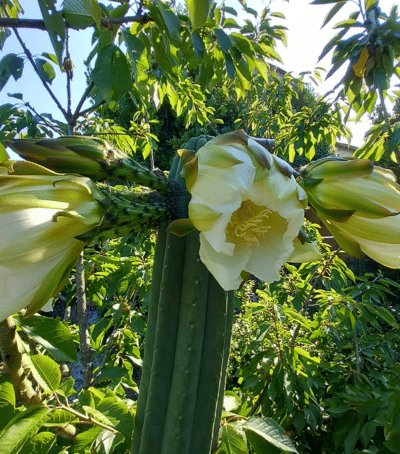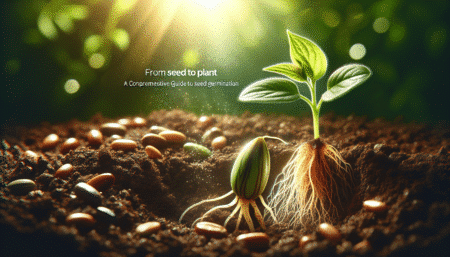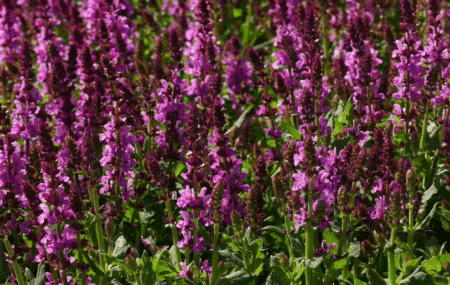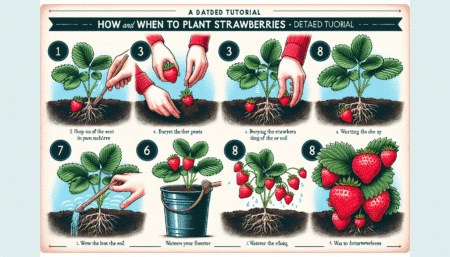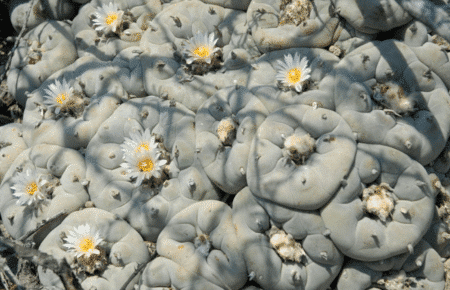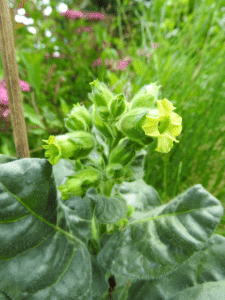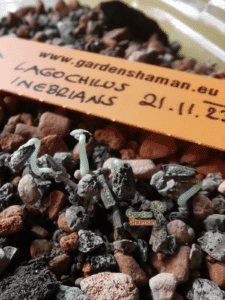- The fascination of the Trichocereus cactus: a look at its unique beauty
- Preparing for cultivation: selecting and procuring the right seeds or seedlings
- Choice of location for the Trichocereus cactus: Sunny, warm and sheltered from the wind
- Soil preparation for optimum growth: pay attention to drainage, nutrients and pH value
- Planting time and technique for the best results
- Care during the growing process: watering, fertilizing and protection from pests
- Special challenges in keeping Trichocereus cacti: Frost sensitivity and overwintering strategies
- Harvest time for a rich yield of flowers
- Ways of propagating Trichocereus cacti by cuttings or sowing seeds
- Conclusion : A rewarding experience - the successful cultivation of Trichocereus cacti
Here you can find our selection of Trichocereus seeds and others!
Growing Trichocereus cactus
The fascination of Trichocereus cactus: a look at their unique beauty. Have you ever heard of Trichocereus cacti? These fascinating plants are not only extremely decorative, but also relatively easy to grow. In this blog article, you will learn how to select and obtain the right seeds or seedlings, choose the optimal location for your cactus and prepare the soil for optimal growth. You will also receive information on the best planting time and technique, care during the growing process and special challenges when keeping Trichocereus cacti. It also covers ways of propagation and the harvest time for abundant flowering. Learn how successfully growing Trichocereus cacti can be a rewarding experience.
1. the fascination of the Trichocereus cactus: a look at its unique beauty
If you are interested in growing Trichocereus cacti, you will soon realize that these plants are not only fascinating because of their easy care and fast growth. Their unique beauty is also reason enough to take a closer look at them. The different species and varieties of the Trichocereus cactus genus are known for their colorful flowers in different colors such as white, pink or orange. Some of these flowers can reach a size of up to 20 centimetres! But the spines of the plant are also impressive to look at: They grow in dense clusters and can be up to ten centimetres long. So if you are looking for an unusual and extremely decorative plant, you should definitely take a look at the Trichocereus cactus!
2. preparation of the cultivation: selection and procurement of the right seeds or seedlings
To successfully grow a Trichocereus cactus, it is crucial to select and obtain the right seeds or seedlings. There are different types of Trichocereus cacti, each with different environmental requirements. It is therefore important to find out in advance which cactus is best suited to the chosen location. When buying seeds or seedlings, you should pay attention to quality and only buy from reputable dealers. It is also advisable to find out about the germination capacity of the seeds and, if necessary, buy more seeds than required to ensure successful germination. Seedlings are also a good option for growing Trichocereus cacti. They can be purchased from nurseries or online stores and offer the advantage of an already established root system. However, quality standards should also be observed when purchasing seedlings. Overall, careful selection of seeds or seedlings forms the basis for successful growth of the Trichocereus cactus. With good preparation, you can ensure that you will enjoy a healthy and flowering cactus for a long time.
3. choice of location for the Trichocereus cactus: sunny, warm and sheltered from the wind
If you decide to grow a Trichocereus cactus, it is important to choose the perfect location for your plant. There are a few factors to consider to ensure that your cactus grows and thrives optimally. A sunny spot is a must for this type of cactus. A location with at least 6 hours of direct sunlight per day is best. The location should also be warm - ideally with temperatures between 20-30 degrees Celsius. But it's not just sun and warmth that are relevant for the cactus to thrive: wind can also play an important role. Although Trichocereus cacti are wind-tolerant, strong winds can damage or even topple the plants. It is therefore advisable to choose a sheltered spot for your Trichocereus - behind a wall or fence, for example. If you take all these aspects into account, nothing will stand in the way of successfully growing your Trichocereus!
4. soil preparation for optimum growth: pay attention to drainage, nutrients and pH value
An important factor for optimal growth of Trichocereus cactus is soil preparation. A well-drained soil is particularly important to prevent waterlogging and promote root growth. For this purpose, it is advisable to create a drainage layer of coarse sand or gravel at the bottom of the planter. The pH value of the soil also plays a decisive role in the plants' ability to thrive. Trichocereus prefer a slightly acidic to neutral pH value between 6.0 and 7.5. Organic fertilizers such as compost or horn shavings can be used to improve the nutrient balance in the soil. If the soil has a high mineral content, it may also be useful to add peat or leaf soil. Good preparation of the soil contributes significantly to the success of growing Trichocereus cacti and enables healthy growth with magnificent flowers and strong shoots.
5. planting time and technique for the best results
An important factor for the successful cultivation of Trichocereus cacti is the planting time and technique. The ideal time for planting is in spring, when the weather gets warmer and the days are longer. It is important that the soil has warmed up sufficiently and that there is no longer any danger of frost. Before planting, the soil should be loosened to ensure good drainage. Seedlings should be planted about 5 to 10 cm deep in the soil and seeds should be buried about 2 to 3 cm deep. The plant then needs sufficient water to grow well. For optimal development, it is advisable to keep a distance of at least one meter between the individual plants. There are also special techniques such as potting or cuttings propagation to grow several new Trichocereus cactus varieties. In potting, the top half of the stem is cut off and planted in fresh soil, where it can then form roots. When propagating by cuttings, part of the stem is cut off and planted in moist sand until it forms roots. The right planting time and the right technique can be crucial for your Trichocereus cactus plant to thrive. So think carefully about which method you want to choose and when the best time is. Proper planning and preparation can help to grow your Trichocereus cactus successfully and turn it into a beautiful specimen in your garden or on the balcony.
6. care during the growing process: watering, fertilizing and protection against pests
An important part of the successful cultivation of Trichocereus cacti is proper care during the growing process. Watering, fertilization and protection from pests play a central role here. The Trichocereus cactus needs regular watering, but be careful: waterlogging should be avoided as it can lead to root rot. Good drainage in the soil helps to remove excess water. Fertilization should not be neglected either. It is advisable to give the cactus a special cactus fertilizer every few weeks to provide it with sufficient nutrients. Another important aspect is protection against pests such as spider mites or scale insects. Natural products such as neem oil can be used to keep them away or to combat them. With careful care during the growing process, the Trichocereus cactus will thrive and develop its unique beauty to the full.
7 Special challenges in keeping Trichocereus cacti: Frost sensitivity and overwintering strategies
One of the biggest challenges when keeping Trichocereus cacti is their sensitivity to frost. These cacti originate from warmer regions and are therefore not used to cold temperatures. If the temperature drops below freezing, they can be damaged or even die. It is important that you protect your Trichocereus cacti in winter to avoid this danger. There are various overwintering strategies for Trichocereus cacti. One option is to keep them in a heated greenhouse. The greenhouse offers protection from the cold and can also provide higher humidity, which is very important for the growth of these cacti. Another option is to move the plants to a room that stays constantly between 5 and 10 degrees Celsius. This can be a cellar or a garage. Whichever method you choose, you should make sure that your Trichocereus cacti do not get too much water during the winter. As they are in a dormant phase and do not receive as much light as in the summer months, they need less water than normal. Remember: the sensitivity of Trichocereus cacti to frost should never be underestimated! However, it is definitely worth dealing with these particular challenges in order to continue your growing project successfully and allow these unique beauties to thrive!
8. harvest time for a rich yield of flowers
If you want your Trichocereus cactus to produce a rich yield of flowers, you should not ignore the time of harvest. Because only if you harvest at the right time can you enjoy a lush flowering display. The ideal harvest time for your Trichocereus cactus depends on the type of cactus and can vary. In general, however, you should make sure that the flower buds are fully open and the flower is in full bloom. If you harvest too early, the flower may not have developed its full beauty or may even fall off. So wait patiently and observe your plants closely so as not to miss the optimum time for harvesting. By being attentive and caring for your plants, you will be rewarded with a rich yield of colorful flowers.
9. possibilities for the propagation of Trichocereus cacti by cuttings or seeding
Another way to increase your Trichocereus cactus population is by cuttings or sowing. Propagating Trichocereus cacti by cuttings is relatively easy and quick. You select a healthy shoot and cut it off. Leave the cutting to dry for a few days before placing it in a substrate mixed with sand and soil. Make sure the soil is well drained and give the new seedling enough water to grow. Alternatively, you can also use seeds to grow new plants. However, it takes longer than propagating by cuttings. If you decide to use this method, you should make sure that the seeds come from a trustworthy source and are of high quality. The choice between these two methods ultimately depends on your personal preferences. If quick results are important to you and you already have an established plant, the method of propagation by cuttings may be ideal. However, if you enjoy spending time growing something new or want more control over the process, using seeds can be a rewarding experience. Regardless of which method is chosen, there is nothing more exciting than successfully growing Trichocereus cacti! With a little preparation and care, these fascinating plants can become a stunning eye-catcher in your garden.
10.conclusion : A rewarding experience - the successful cultivation of Trichocereus cacti
Growing Trichocereus cacti successfully is not only a challenge, but also a rewarding experience. The process requires patience, time and proper care, but in the end you will be rewarded with stunning blooms. It is fascinating to see how a small seed or seedling grows and flourishes into a magnificent cactus. The choice of location should be carefully considered to ensure that the cactus gets enough sun and warmth and is protected from the wind. Soil preparation also plays a crucial role in the optimal growth of the Trichocereus cactus. Watering, fertilization and protection from pests must be taken care of during the growing process. There are particular challenges when keeping Trichocereus cacti due to their sensitivity to frost in winter. However, with the right overwintering strategies you can counteract this. When the time comes to harvest, you will be rewarded with a rich yield of flowers. And if you want even more Trichocereus cacti, you can propagate them by cuttings or seed. All in all, it remains to be said: Successfully growing Trichocereus cacti is definitely a rewarding experience!
Note: The information in this article is for informational purposes only and is not intended to replace the advice of a doctor or other healthcare professional. Always consult a doctor before using any new herbs or supplements, and always check that certain plants are legal in your country before growing them.

